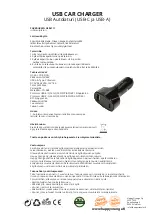
–
Convertible child restraints
→
–
Booster seats and safety belts
Booster seats and safety belts
–
Installing child restraints with a safety belt
→
Child restraints and the Advanced
Airbag System
Please read the introductory information and
heed the Warnings and Notice and on page
Advanced front airbag system and children
Your vehicle is equipped with a front “Advanced
Airbag System” that complies with United States
Federal Motor Vehicle Safety Standard
(FMVSS) 208 and with Canada Motor Vehicle
Safety Standard (CMVSS) 208 as applicable at the
time your vehicle was manufactured.
The Advanced Airbag System in your vehicle has
been certified to meet the “low risk” require-
ments for 3 to 6 year-old children (as defined in
the standard) on the passenger side and small
adults on the driver side. “Low risk” deployment
occurs in those crashes that take place at lower
decelerations as defined in the electronic control
unit. The low risk deployment criteria are intend-
ed to reduce the risk of injury through interaction
with the airbag that can occur in these collisions,
for example, by being too close to the steering
wheel or instrument panel when the airbag in-
flates.
In addition, the system has been certified to
comply with the “suppression” requirements of
the Safety Standard, to turn off the front airbag
automatically for infants up to 12 months who
are restrained on the front passenger seat in
child restraints that are listed in the Standard.
Even though your vehicle is equipped with an Ad-
vanced Airbag System, all children, especially
those 12 years and younger, must always ride in
the back seat properly restrained for their age
and size. The airbag on the passenger side makes
the front seat a potentially dangerous place for a
child to ride. The front seat is not the safest place
for a child in a forward-facing child restraint. It is
a very dangerous place for an infant or a larger
child in a rearward-facing seat.
The vehicle's Advanced Airbag System has a ca-
pacitive passenger detection system in the front
passenger seat cushion that can detect the pres-
ence of a baby or a child in a child restraint sys-
tem on this seat.
The capacitive passenger detection system
measures the capacitance of the child and the
child restraint and a child blanket on the front
passenger seat. The capacitance due to the pres-
ence of a child, a child restraint, and a baby blan-
ket on the front passenger seat is related to the
child restraint system resting on the seat. The ca-
pacitance of a child restraint system varies de-
pending on the type of system and specific make
and model.
The electrical capacitance of the various types,
makes, and models of child restraints specified
by the U.S. National Highway Traffic Safety Ad-
ministration (NHTSA) in the relevant safety
standard are stored in the Advanced Airbag Sys-
tem control unit together with the capacitances
typical of infants and a 1 year-old child. When a
child restraint is used on the front passenger seat
with a typical 1 year-old infant, the Advanced
Airbag System compares the capacitance meas-
ured by the capacitive passenger detection sys-
tem with the data stored in the electronic control
unit.
Child restraints and Advanced Airbags
No matter what child restraint you use, make
sure that it has been certified to meet U.S. Feder-
al Motor Vehicle Safety Standard 213
(FMVSS 213) or, if you live in Canada, Canada Mo-
tor Vehicle Safety Standard 213 (CMVSS 213). Al-
so make sure that the child restraint you are us-
ing has been certified by its manufacturer for use
with an airbag. Always be sure that the child re-
straint is properly installed at one of the rear
seating positions. If in exceptional circumstances
you must use it on the front passenger seat,
carefully read all of the information on child
safety and Advanced Airbags and heed all of the
applicable WARNINGS. Make certain that the
child restraint is correctly recognized by the ca-
pacitive passenger detection system inside the
front passenger seat, that the passenger front
5
5K7012723F
C








































